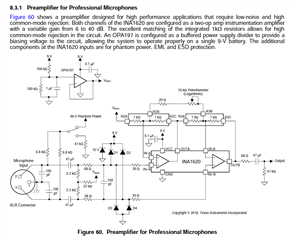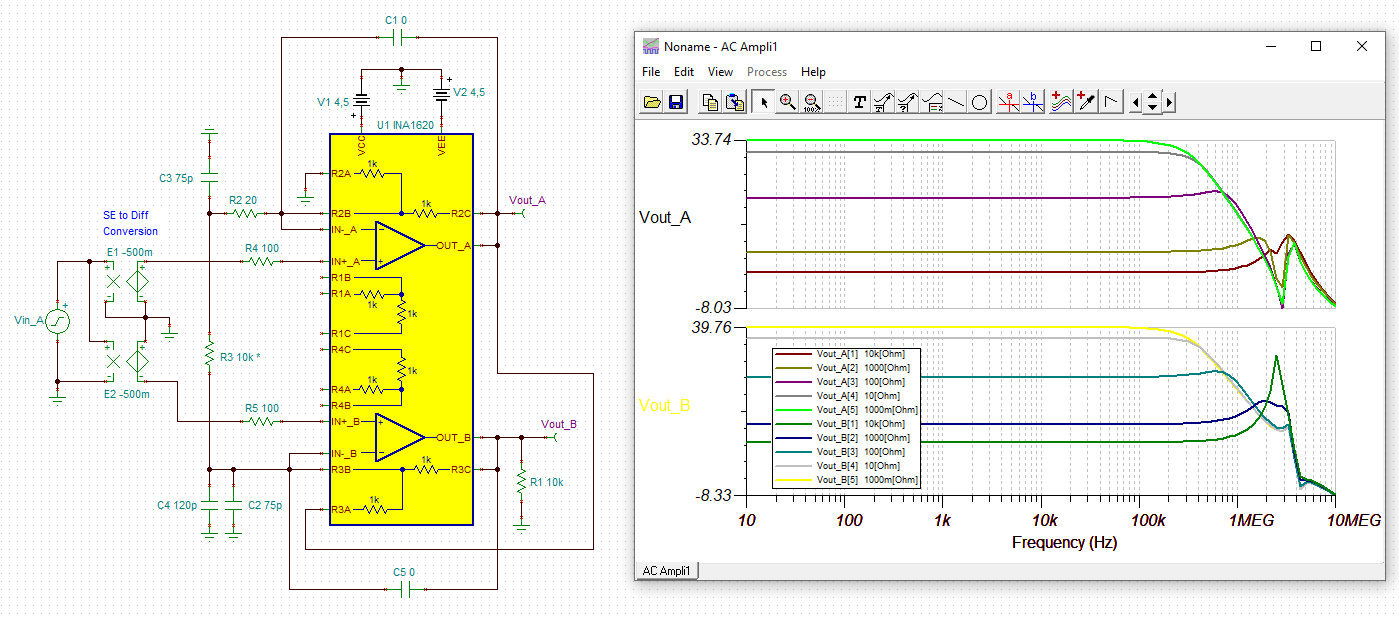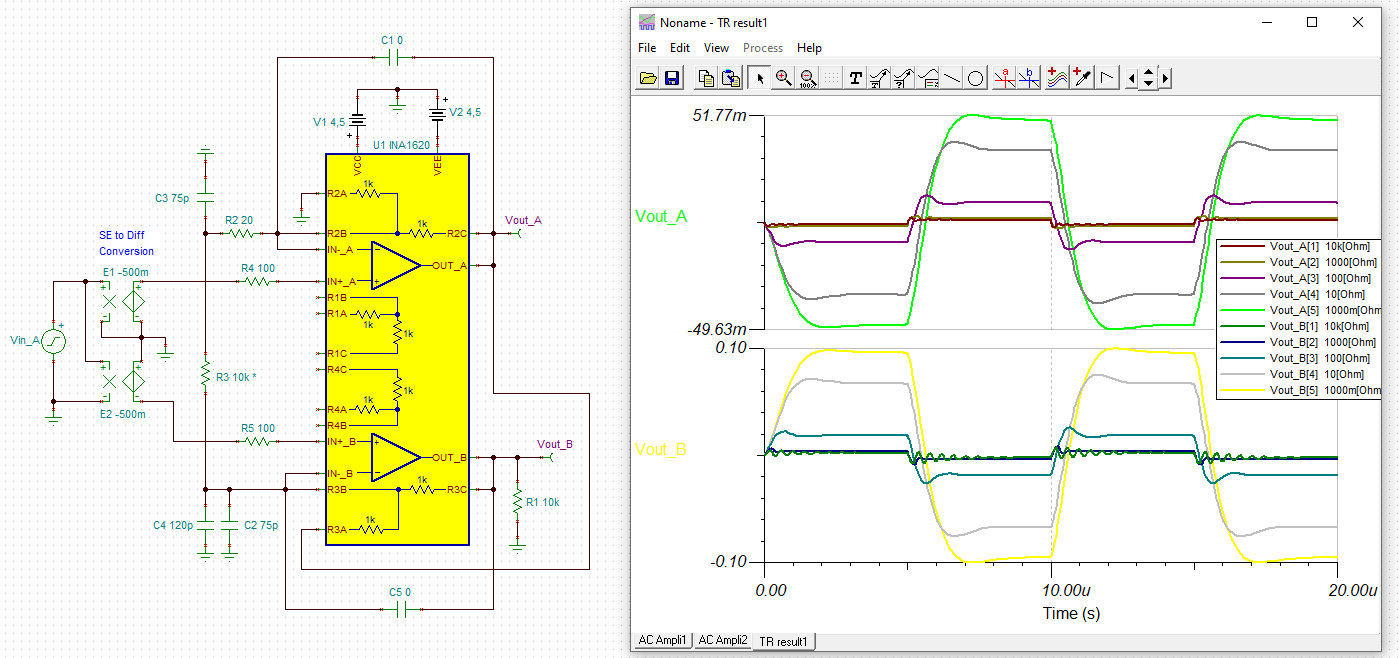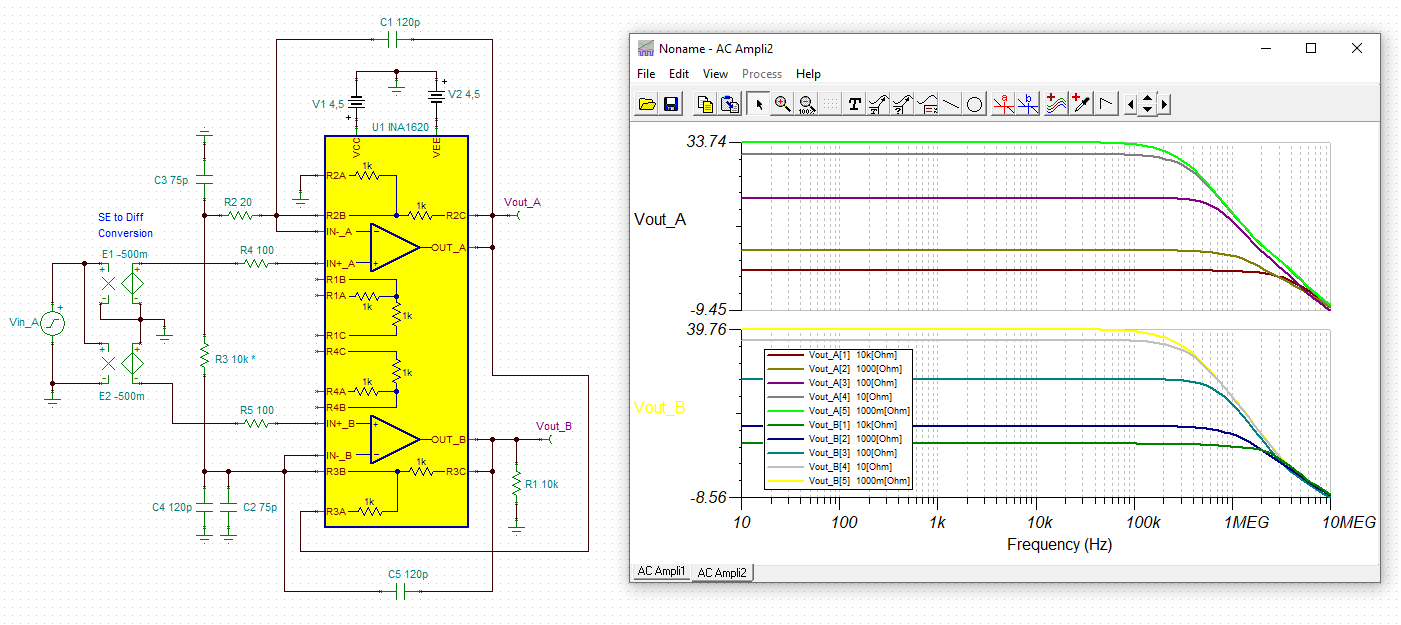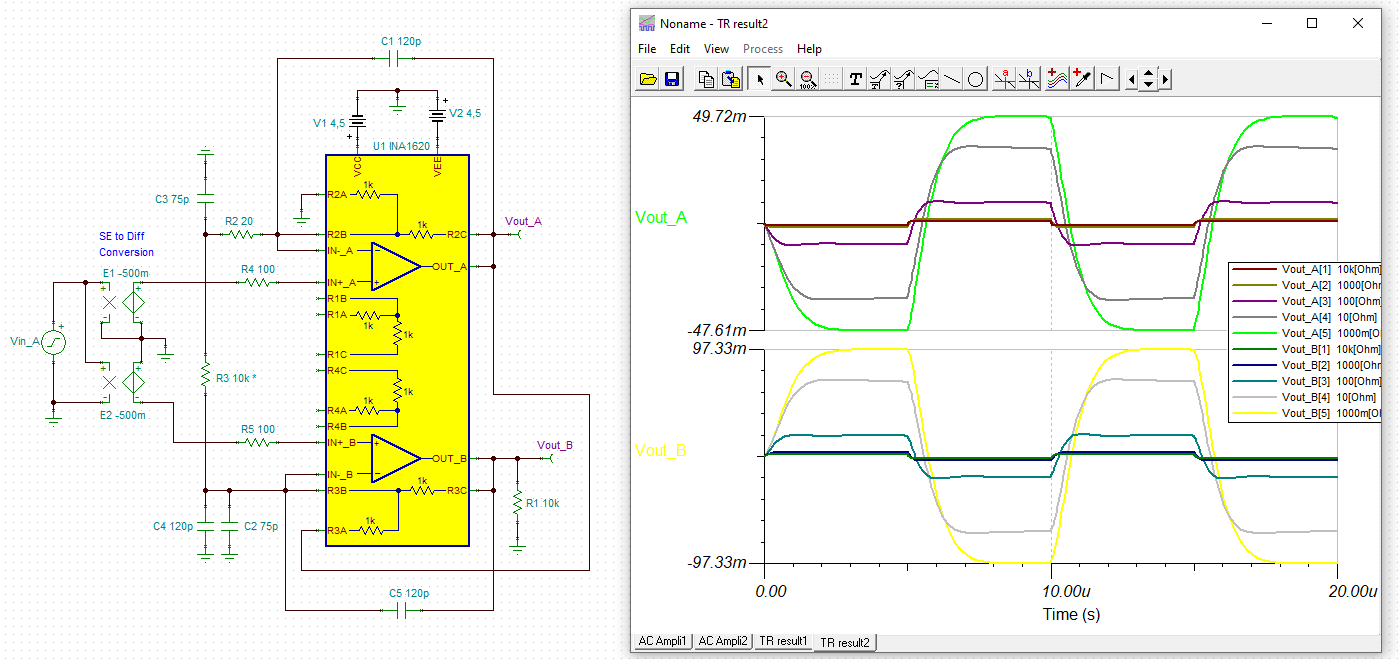Other Parts Discussed in Thread: TINA-TI
In the schematic provided in the INA1620 Datasheet for Microphone preamp, there is a potentiometer provided to se the gain from between 6db and 40dB. I have an application that requires multiple fixed gain values, currently: 0dB, +20dB and +40dB. Not being an expert on this part, are there any considerations I should worry about in regards to stray capacitance, or other factors, when selecting either a digital potentiometer, or digital switch which would switch in different fixed resistances at that location? Thanks!
